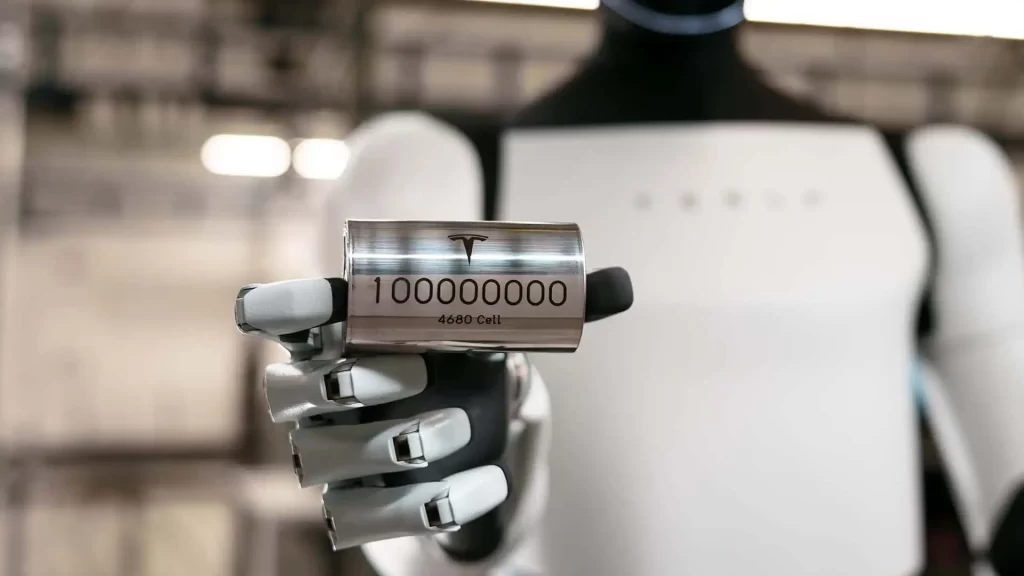
While Tesla is certainly shifting its core focus away from electric cars towards artificial intelligence and robotics, a new report suggests that battery development for its next-generation models and the Robotaxi is underway in full swing at the company. The primary goals are improved performance, cost reduction, and mass deployment.
According to The Information, which interviewed people with direct knowledge of Tesla’s future plans, the automaker plans to reveal four new versions of the 4680-type cells in 2026. The number denotes the diameter (46 millimeters) and length (80 mm) of the cells. They are currently being used in the Cybertruck and Model Y.
The Robotaxi, which will be revealed on October 10, could be equipped with one of the new versions of these batteries. The report claims that the Cybertruck could also get a new battery type next year. Another new version of the 4680 cells using silicon carbon anodes could also power some future models.
Tesla now produces half a million 4680 cells daily, indicating it may have solved some production bottlenecks that limited its mass deployment. However, Tesla has struggled to make the next generation of these cells, known as 4680D, the letter denoting a new “dry” manufacturing process.
According to the Oak Ridge National Laboratory, the electrodes in traditional batteries use a wet slurry that’s expensive, harmful to the environment, and takes up a lot of space on the factory floor. The dry process eliminates these toxic solvents by mixing “dry powders with a binder,” which is a more efficient and environmentally friendly method.
Musk gave Tesla engineers an end-of-the-year deadline to figure out mass production for the dry cathodes or scrap the 4680D plan entirely. The target also includes lowering the cost of production of regular 4680 cells. The report adds that despite the low production yield for the dry cathodes, Tesla plans to introduce them in the Cybertruck next year.
There are four new versions of the 4680 cell that will use the dry cathode: NC05, NC20, NC30 and NC50 (NC means new cell). The NC05 will reportedly power the Robotaxi. According to the outlet, the cell won’t be ready for production till 2026, which means we’re still far off from the Robotaxi’s commercial deployment.
The more energy-dense NC20 will power an electric SUV, the Cybertruck, and potentially other future EVs.
The NC30 and NC50 will introduce silicon carbon anodes. In a battery, the anode is the positive electrode. According to some studies, if it’s made using silicon carbon, it can apparently hold more lithium, thus improving range and charging speeds. The NC30 will apparently be installed in a future sedan and Cybertruck, whereas the NC50 will go into performance versions.
At present, Tesla buys most of its batteries from Japan’s Panasonic, China’s Contemporary Amperex Technology Ltd (CATL), and Korea’s LG Energy Solution. However, the automaker is also mass-producing its own 4680 cells.
Musk previously said mass-producing the 4680 cells would help the automaker deliver more affordable cars. However, the production ramp-up of the 4680 cells has been a nightmare. According to the report, Tesla is losing 70-80% of the cathodes—the negative electrode in a battery—in test production, whereas traditional battery makers lose only about 2%.
2026 is going to be a crucial year for several automakers, including Tesla, as multiple new electric cars priced under $30,000 are due for launch in the U.S. That includes the Ford “skunkworks” EVs, the Kia EV3, next-gen Chevy Bolt EV and Tesla’s own future affordable EV among many others.
With GM, Hyundai and Ford already slowly chipping away from Tesla’s EV market lead, which is down by more than 10% this year compared to last year, battery development like this and more vertical integration might be a way for Tesla to continue dominating the EV race down the line.
